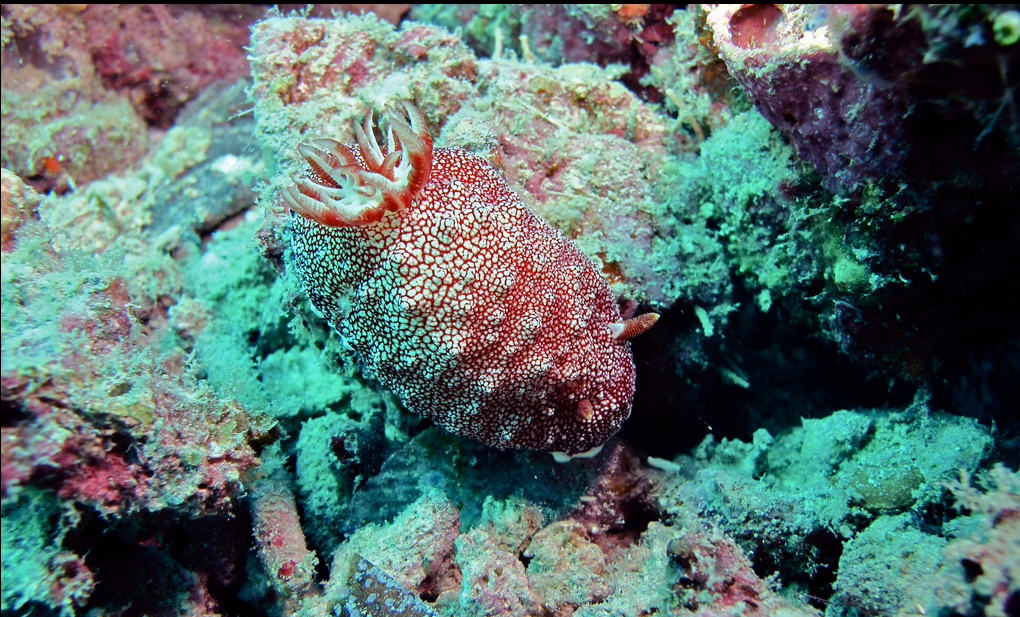Form and Function
Chromodoris reticulata, along with many other similar sea slugs, has many unique and efficient features that help the slug survive and maintain a productive lifestyle in the intertidal regions of the ocean. Chromodoris reticulata functions independently by means of locomotion, its substantial defensive strategies through-out its entire life, and its unique sense of camouflage and nematocysts.
Chromodoris reticulata travel similarly to other sea slugs by what
is known as a foot, or the dorsal side of the slug (Rudman 1999).
The slug is mainly found in the Pacific Ocean (Yong 2013) in the
shallow waters of Indonesia in the intertidal zone (Sekizawa et al. 2013).
In order for the slug to progress in the shallow waters and continue
its mobility, it must contract its muscles in a fashion that
resembles the wave like motion of the ocean (Rudman 1999).
Even though these nudibranches mostly live in the coral reef area
and climate (Anthes 2007), they cannot detect the images of their
environment with their eyes, rather, they just determine lightness
and darkness to determine the depths at which it is moving (Rudman
1999).
The slug appears red and white with embellished gills on the anterior side (Yong 2013). The underside of the slug is white while the mantle is a mix of red with small white and yellow dots speckled across (Yonow 1990). Around the white foot is a yellowish stipe that faces on the same side as the mantle which sometimes resemble the food they eat, such as certain cnidarians (Marin 1997). In order for the slug to detect a predator, it can only visualize shadows with its eyes that are located very closely to its brain (Rudman 1999). This will set off the cnidarian like defensive strategies that the slug has observed and picked up, or cause the slug to quickly contract its muscles in the wave like fashion for it to “swim” away (Marin 1997). Sea slugs are also capable of producing a mucus layer to latch on to items in the ocean more efficiently (Rudman 1999) but also to use as a defensive strategy (Marin 1997). Chromodoris reticulata closely resembles many other sea slugs in the Chromodid nudibranch, but their prey like defense strategies set it apart from all others.
Only during infancy do slugs carry a shell for protection but
then evolve out of it as they grow causing its body, or the mantle,
to be a soft surface (Anatomy 2006). A common ancestor for these
nudibranches, however, had a hard shell for its entire life,
somewhat resembling a snail (Marin 1997). Chromodoris
reticulata carry the red and white colors for camouflage not only
from predators, but also to disguise itself from its prey (Marin
1997). In multiple studies, Chromodoris reticulata not only
picks up its camouflage and colors from its diet, but it also picks
up nematocysts, which is a form of venom (Kass-Simon 2002) and is
able to store them for certain defense mechanisms (Marin 1997).
In order to obtain this, the mouth of the Chromodoris reticulata
opens with a short tentacle with radical like teeth in order to feed
on its prey (Rudman 1997). These modified and highly useful
adaptations that the Chromodoris reticulata has picked up over its
lifetime help the slug flourish as an individual organism in the
ocean.
Return to Homepage
Go to Reproduction
